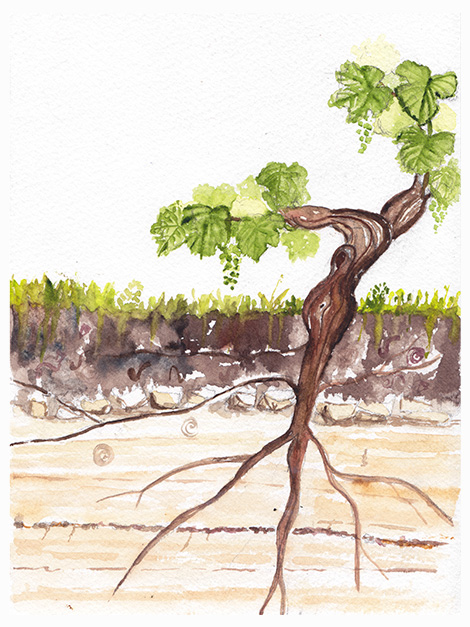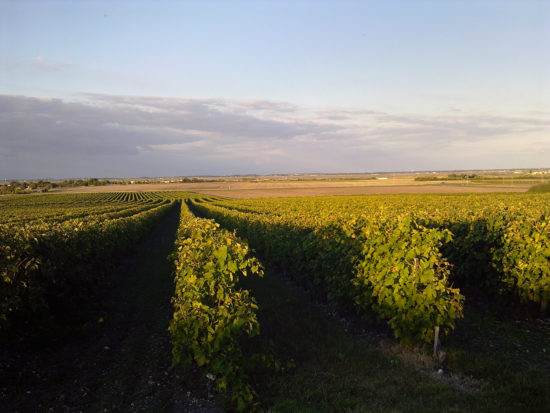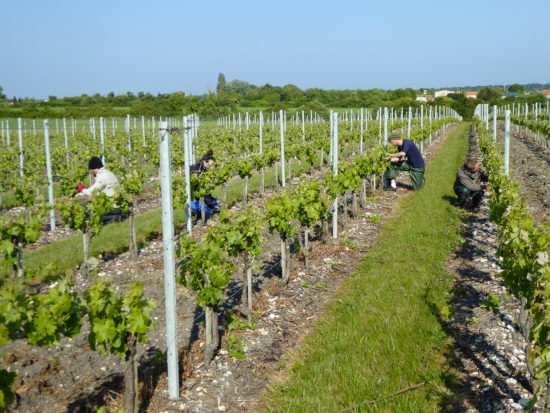« The soil is to the wine the same thing that heredity is to men. »
Most of the vines at Domaine des Claires are planted on the slopes leading down to the Seudre river.
Our vineyards is composed with Ugni blanc for Cognac and pineau blanc, Colombard, Sauvignon and Chardonnay for dry white wine, Merlot and Cabernet franc for pineau rouge, rosé and red wine, and Cabernet Sauvignon for the latter. Thanks to the diversity of soils on the estate, we can adapt the grape variety to the soil that suits it best:
- Chalky limestone
- Fresher clayey soils for cabernet franc.
- Less fertile sandy soils for certain Ugni Blancs intended for Pineaux, obtaining sweeter "musts".

Rooting of the vine
The parent rock of our terroir is Santonian chalk (86 to 83 million years old). It is a soft, gelling limestone that has been subjected to quaternary frost. The term chalk is used to describe friable limestone enriched with marl and clay. Alternating freezing and thawing broke up the chalk, releasing active limestone. This alteration produced the famous clay-limestone Champagne soil.
This was followed by an enrichment of the soil with wind-blown sand, during the formation of the dunes, which had the effect of lightening the soil.
The advantage of chalk is that it allows the vines to take root. The vines benefit from the chalk's water reserves. The water supply is limited but regular: the best quality and provides good resistance to drought. Rooting can go down to several metres.
Champagne-type eau de vie quality: very aromatic, mellow, long on the palate and ages well.
Methods and traditions pruning
The vines dedicated to Cognac are pruned and trained using a traditional Charentais method known as Guyot Poussard. Not only does this method enable vigorous vines to develop well and produce a juice that is light in sugar and acid, optimal for Cognac, it also preserves the sap flow in order to limit wood diseases.
The vines destined for vins de pays and Pineaux are pruned using the Guyot double method. In plots of moderate to low vigour (planting density of 4200 to 5500 vines/ha), this allows vegetation to be spread out as much as possible to obtain healthy grapes and optimum ripening.
Once pruning is complete, a few weeks after budburst, we carry out disbudding: this involves removing superfluous buds from the vine. This is a strictly qualitative process, which helps to aerate the plant, limit the number of bunches and improve winter pruning times.





